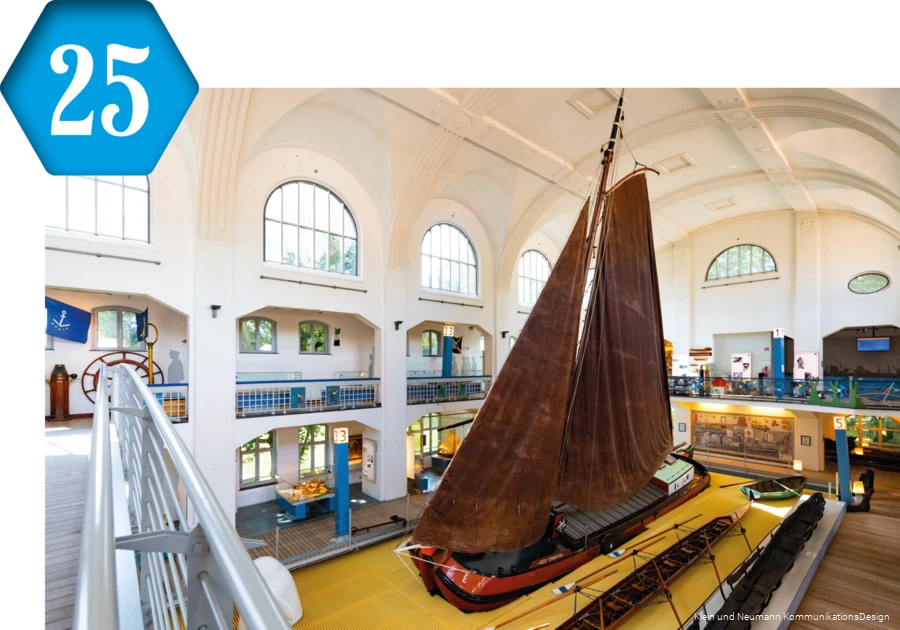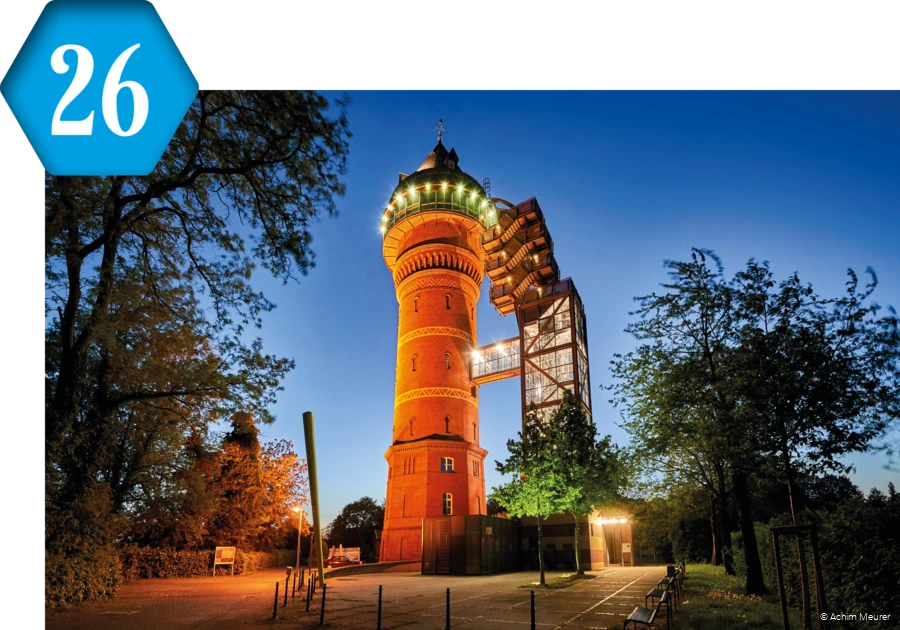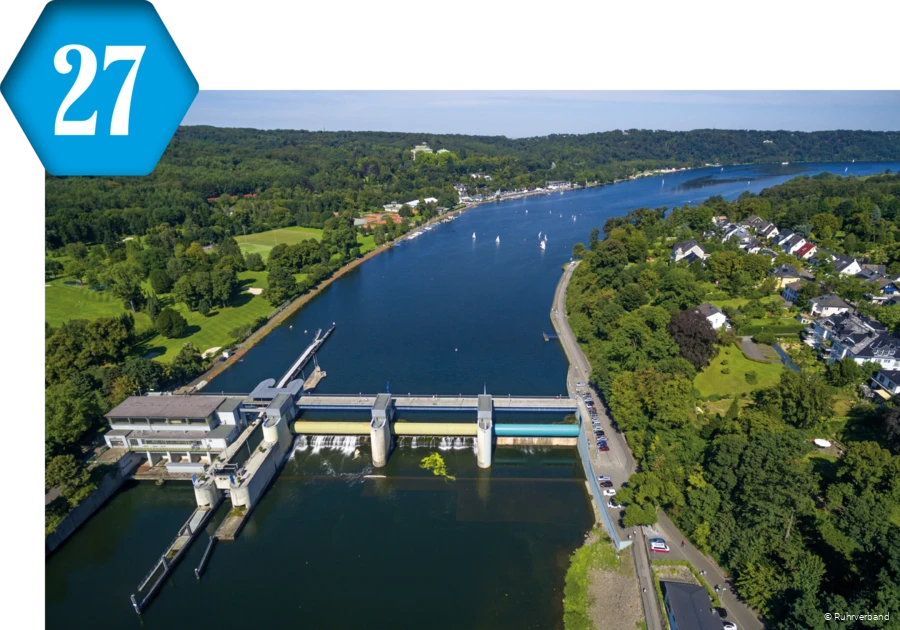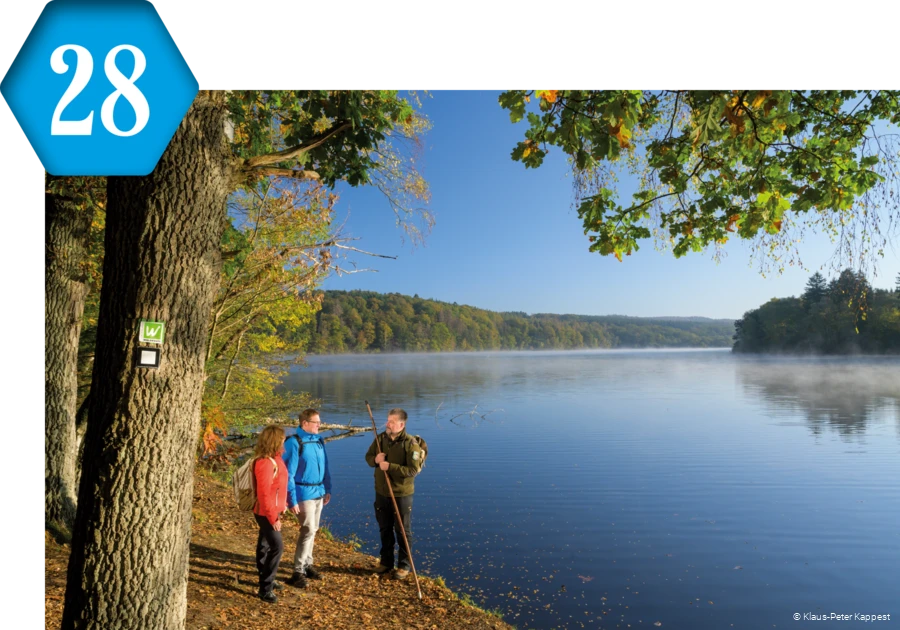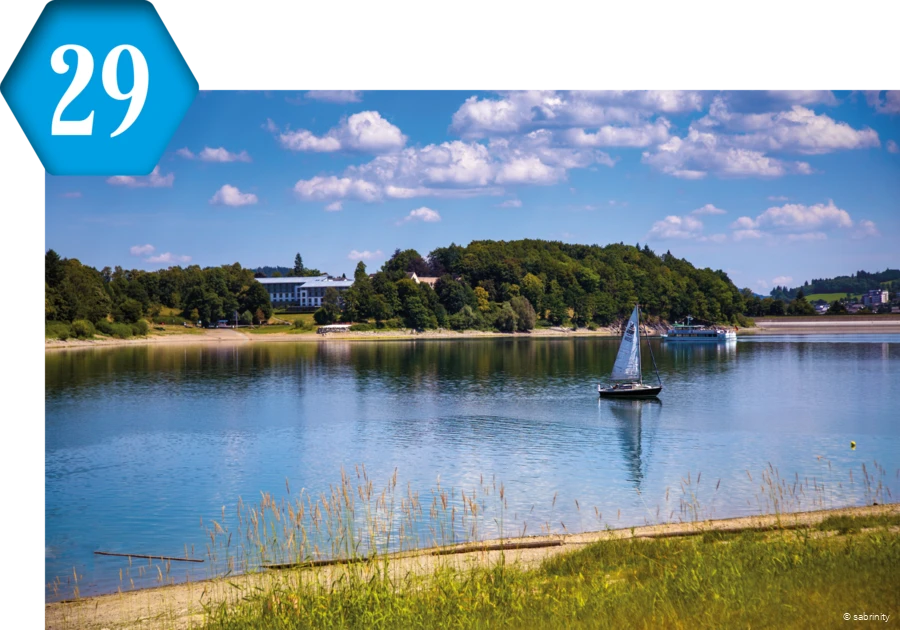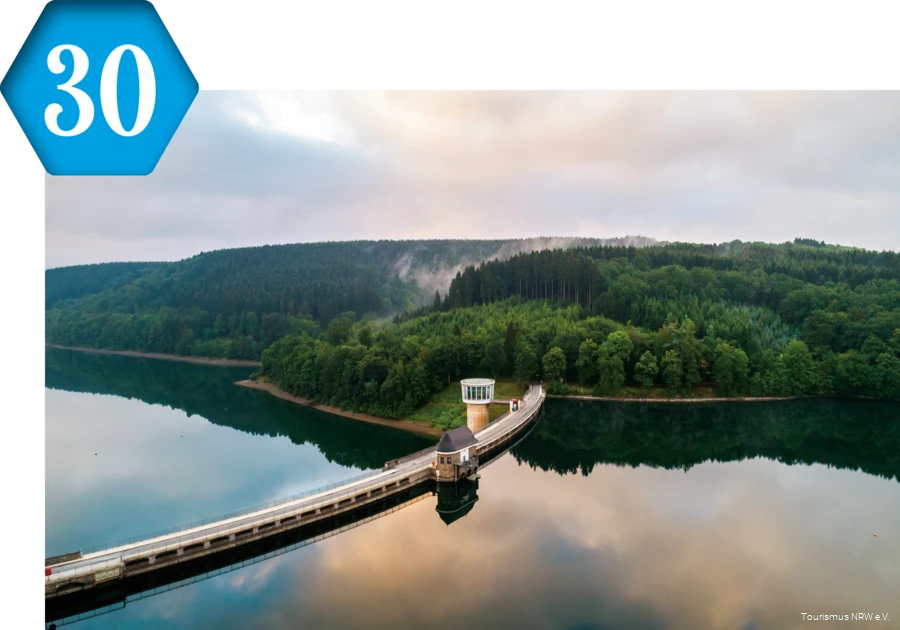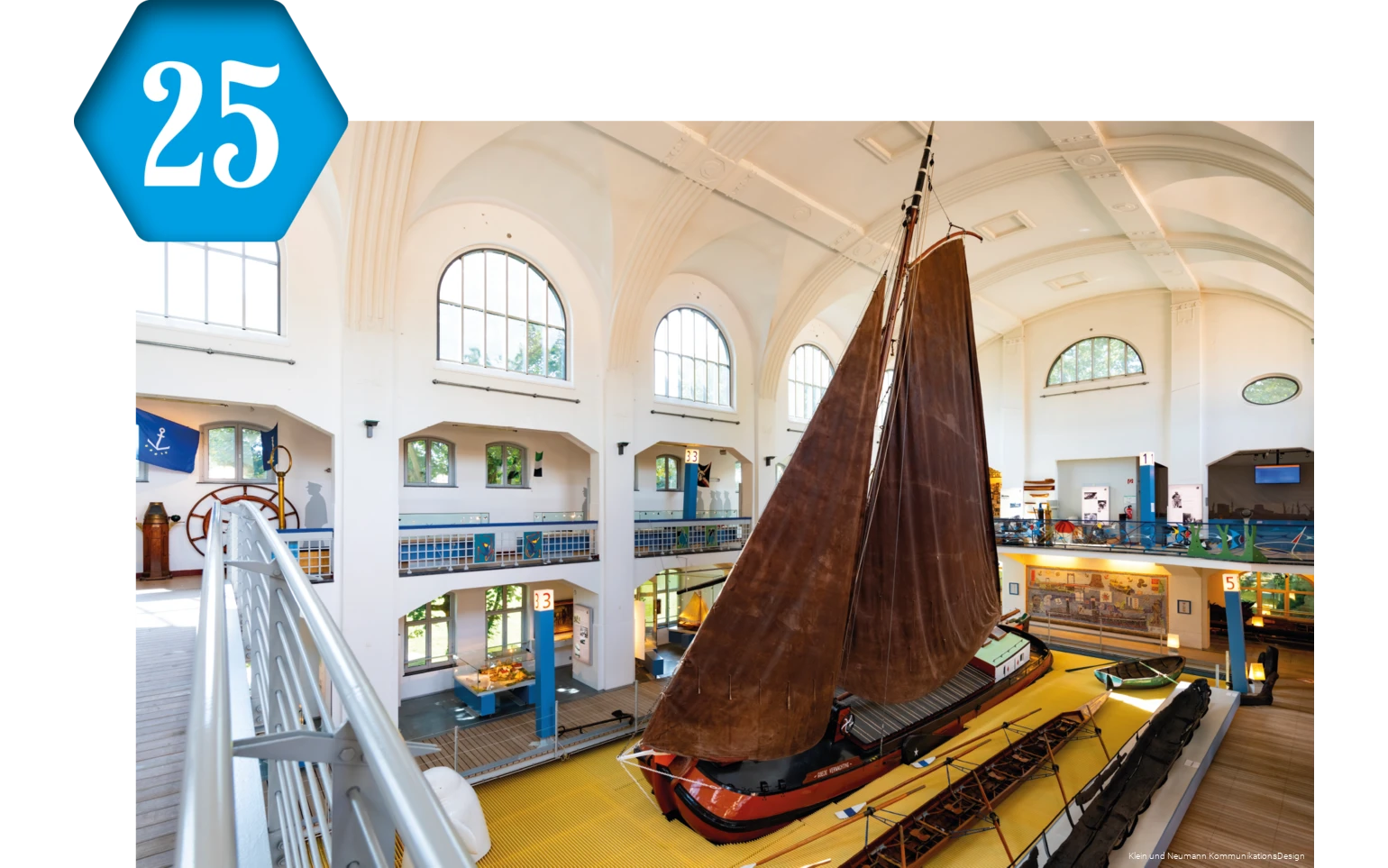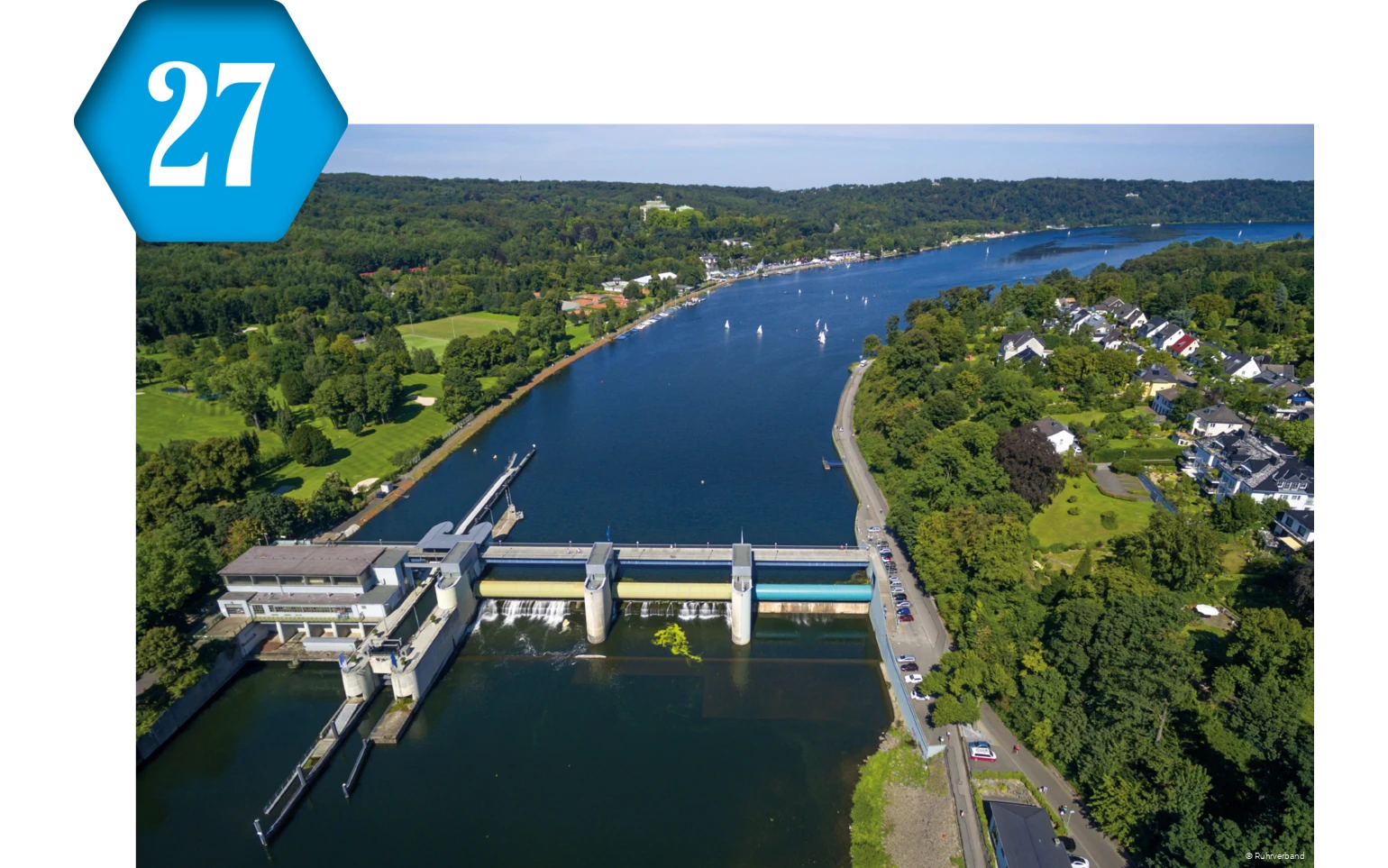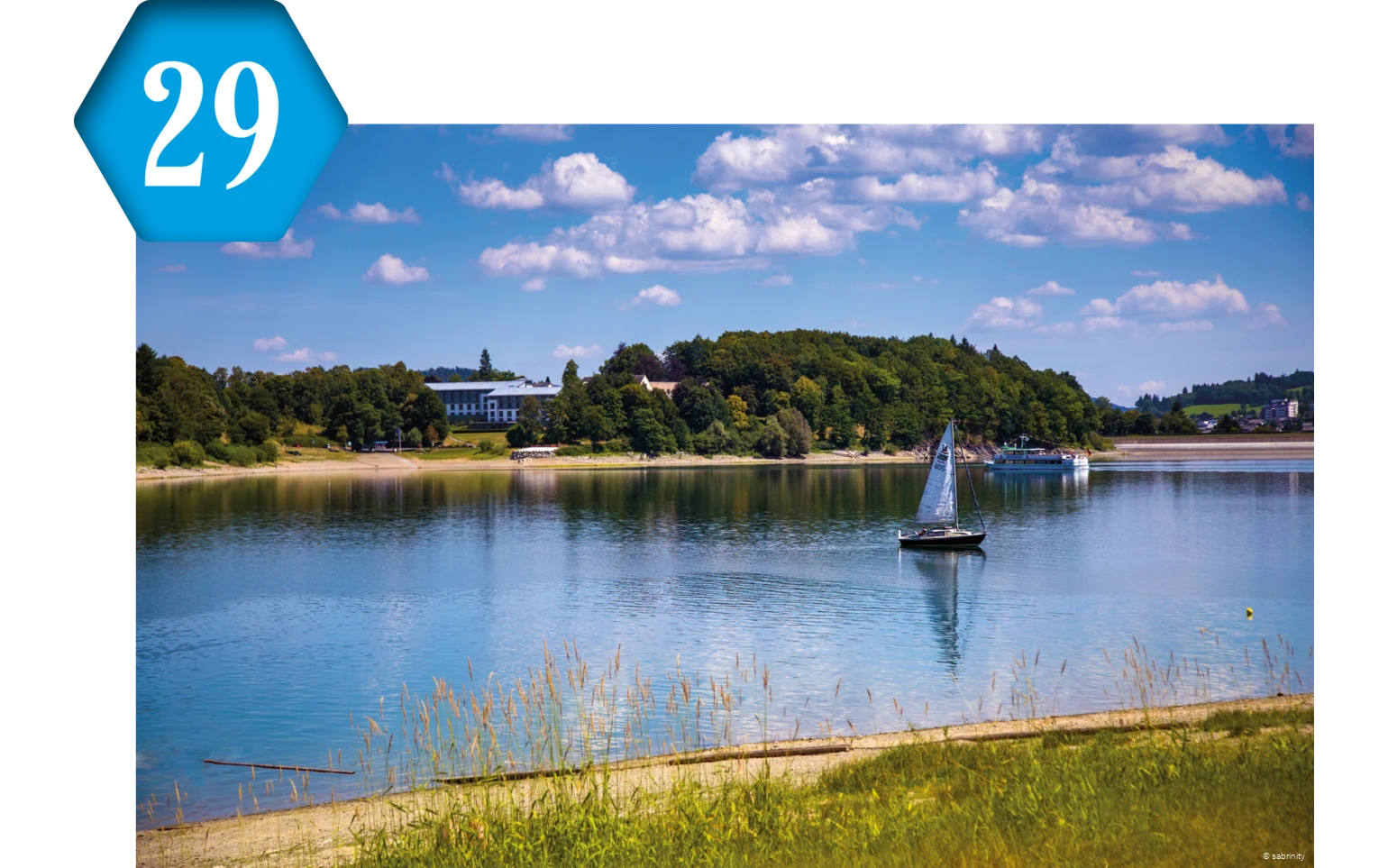No Ruhr District without the Ruhr - this is true in many respects! Take coal and steel, for example: until the mid-20th century, the extraction and processing of one tonne of coal takes 2.5 cubic metres of water, while up to 30 cubic metres are needed to produce one tonne of pig iron. Take transport, for example: before the construction of the railway, 50 percent of the region's coal is shipped along the Ruhr. Take drinking water, for example: the supply to the sprawling cities relies on a multitude of waterworks and towers. The downside: wastewater also ends up in the Ruhr, making it more and more of a cesspit in dry years. Relief is provided by the construction of dams in the Sauerland region, initiated in the late 19th century. At that time, the Ruhr's headwaters are undergoing a period of radical change. The abundant water power, hitherto an indispensable source of energy for a flourishing industrial landscape of ore mines and small iron industries, is desperately outclassed by the fossil fuels coal and coke in the expanding Ruhr region. Yet the same water, stored in dams, safeguards the Ruhr's lifeline by reliably regulating the level of the river. Power plants at the foot of the dams continue to use water power to drive their turbines, while reservoirs such as Hengsteysee, Harkortsee and Baldeneysee serve as fluvial treatment plants, thus improving the water quality of the Ruhr. All these lakes and dams are now a trademark of the Sauerland region as local recreation areas.
All water travel destinations
On this Google map you can find all the highlights and other destinations of the steel time travel from the category water. So you can navigate and plan easily. Alternatively, you can download our overview map with all info as a PDF file.
